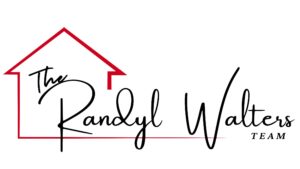
and what’s the FHA, VA, or USDA got to do with it?
When it comes to financing a new home, there are so many things to worry about that most people don’t take the time to understand the difference between the types of available mortgages.
And that’s ok. For most of us, all we really need to know is which mortgage is the best fit for us and our own unique financial situation.
We don’t really care what happens to our mortgage after we sign the papers.
But some of us (you know who you are) have a burning desire to understand it all.
And on our quest for that knowledge, we will inevitably have to figure out the meaning of life, er, I mean, the difference between a government sponsored loan and a government guaranteed loan.
For those of you who are reading this to research a paper for Econ 101, don’t worry, I’ll keep it short and sweet.
FANNIE MAE AND FREDDIE MAC

First of all, who are these people? Are they friends with Pink Floyd or perhaps Alice Cooper?
If you get that reference, dude, you’re old. Or maybe just an old soul.
But truly, Fannie Mae and Freddie Mac are just like those two bands, though they sound like a person, they are not. Fannie Mae and Freddie Mac are really just acronyms for much longer, institutional names.
Fannie Mae stands for the Federal National Mortgage Association and Freddie Mac stands in for the Federal Home Loan Mortgage Corporation.
Both were founded by the government to help more people achieve home ownership, and here’s how they do it.
- Freddie Mac and Fannie Mae are government sponsored businesses. They are not owned by the government and are publicly traded. They operate under a congressional charter, though after the housing crises, they were placed into a conservatorship in 2008.
- They do not lend money to borrowers.
- They do not guarantee loans that lenders make.
- Instead, they buy and package a variety of mortgages (from lenders), then sell mortgage-backed securities (to investors).
- This frees up capital so that lenders can make more loans.
- They also establish standards for lending by requiring that the mortgages they buy meet certain standards. Since lenders want to sell their mortgages to Fannie Mae or Freddie Mac, they are incentivized to conform.
- By doing this, Fannie Mae and Freddie Mac are able to stabilize the lending market and can implement a standard of best practices without actually forcing lenders to comply.
FHA, VA, AND USDA

Ok, so if Freddie Mac and Fannie Mae don’t lend money to the homeowner, then surely that is what the FHA, VA, and USDA must do, right?
Ugh. Nope.
They don’t lend money either.
But, on the bright side, they do help people to achieve home ownership, just like our friends Fannie and Freddie.
As before, let’s first look at what these acronyms stand for. In doing that, you’ll get a hint of what each organization does best.
- FHA stands for the Federal Housing Administration
- VA stands for the U.S. Department of Veteran’s Affairs
- USDA stands for the U.S. Department of Agriculture
All three of these types of loans have some things in common, let’s take a look:
- None of these agencies lends money.
- They do not buy mortgages or sell mortgage backed securities (like Fannie Mae and Freddie Mac)
- Instead, they guarantee a loan. It’s kind of like having a government agency as a co-signer on your loan.
- Lenders are more eager to loan money to higher risk buyers when they have insurance against default
- That is why these agencies are most helpful for buyers with low income, limited credit or lower credit scores, and/or a small down payment
What is different about each of these?
Each agency does have a different set of requirements and different loan terms and limits, and this makes sense because they were each created to target a different segment of the population.
- FHA targets the broadest segment of the population and is very popular with first time home buyers or those with poor credit.
- VA loans are only available for active duty, reserve, or veteran members of any branch of the armed forces
- USDA loans were created specifically to stimulate rural development and as such, not only must the buyer meet certain requirements, but the property must also be in an approved area to qualify.

summary
In summary, Freddie Mac and Fannie Mae don’t lend money, they buy mortgages from banks to help keep lenders liquid and free up cash so that banks can make more mortgages.
They have standards that these mortgages must meet and so lenders comply in order to sell their mortgages to Fannie and Freddie.
FHA, VA, and USDA don’t lend money, nor do they buy or sell mortgages, but they do guarantee loans so that banks are more comfortable lending to buyers who otherwise would not qualify.
That allows lenders to give loans more freely.
Both programs promote home ownership and help regulate the industry by implementing strict standards and requiring compliance.



